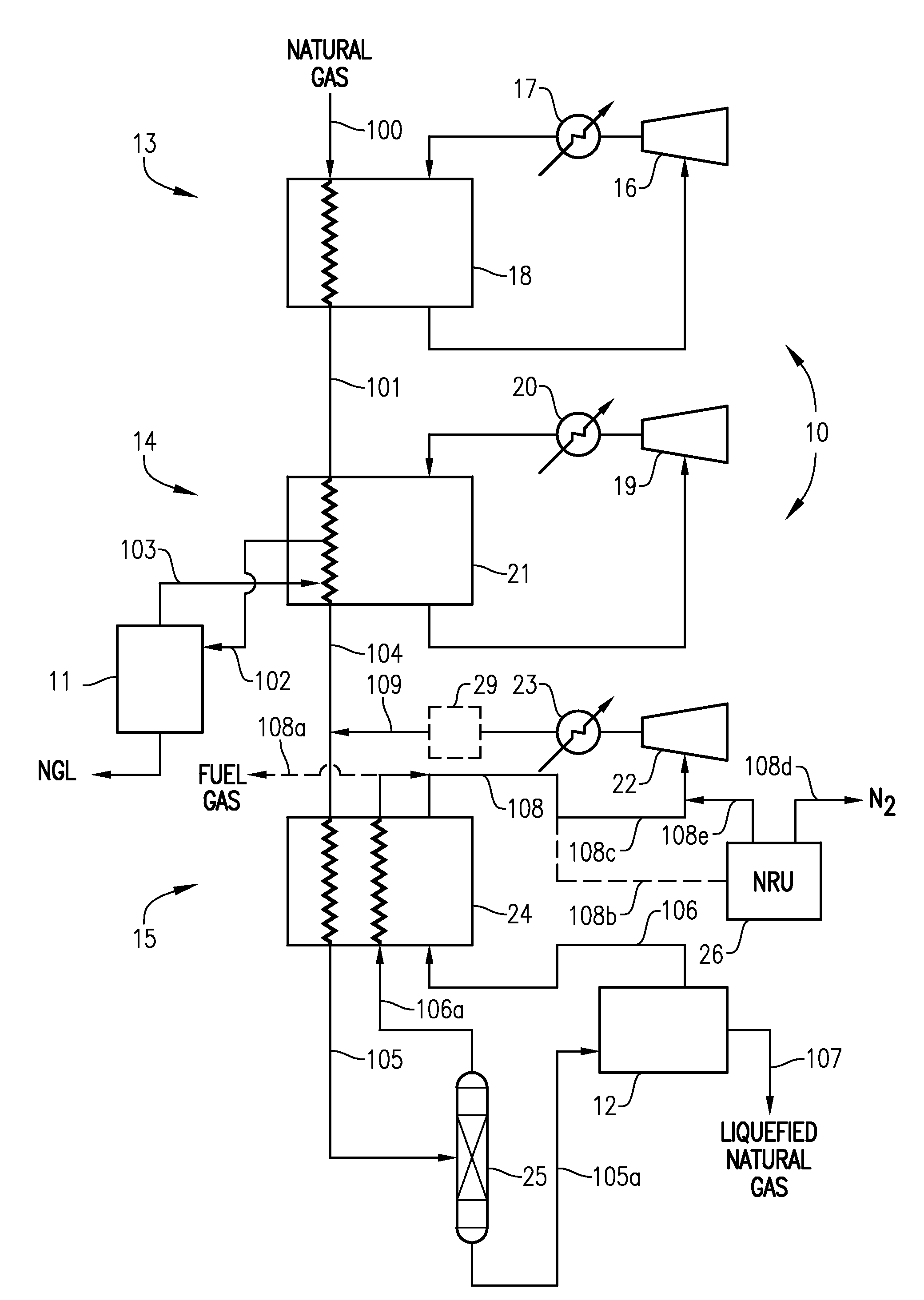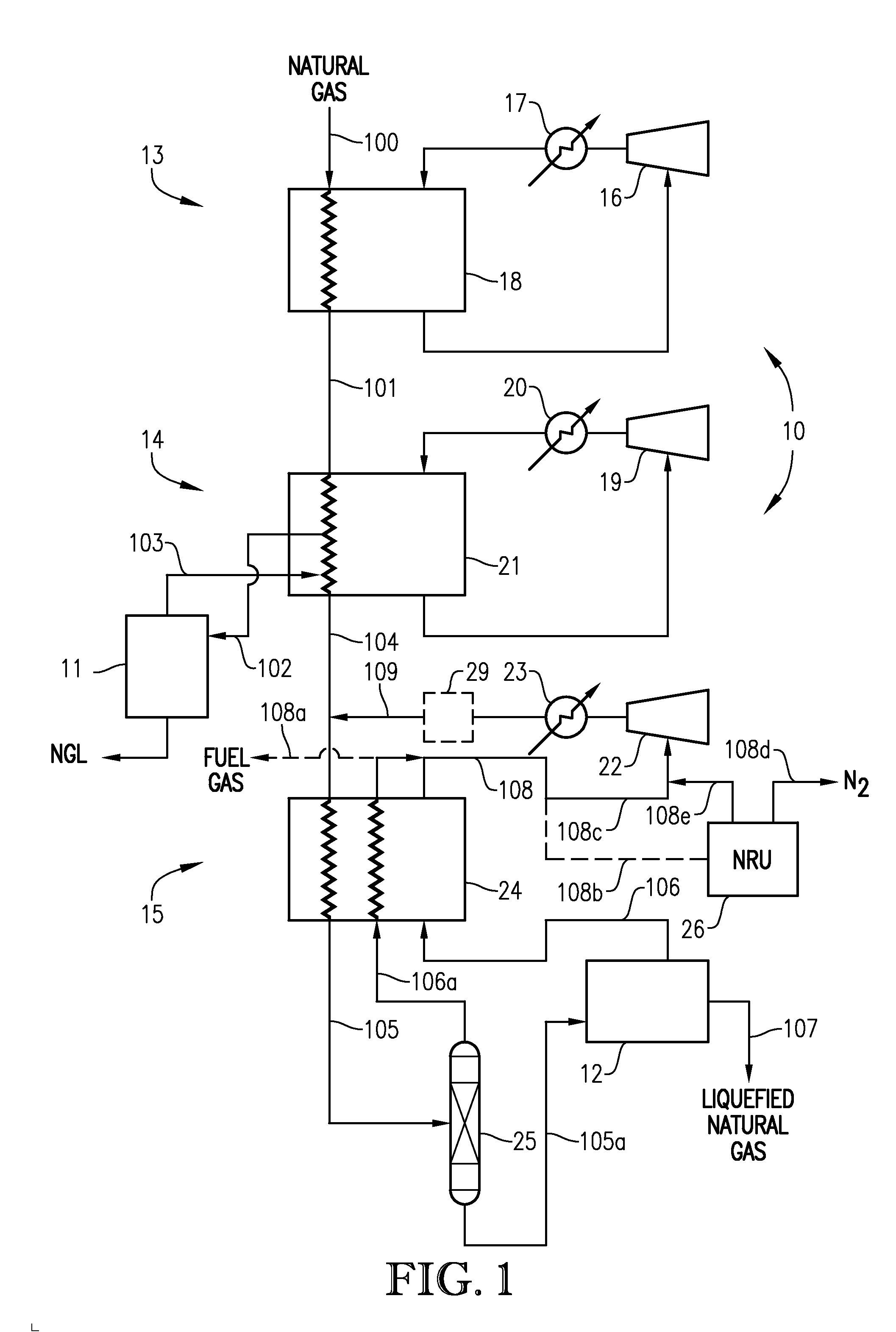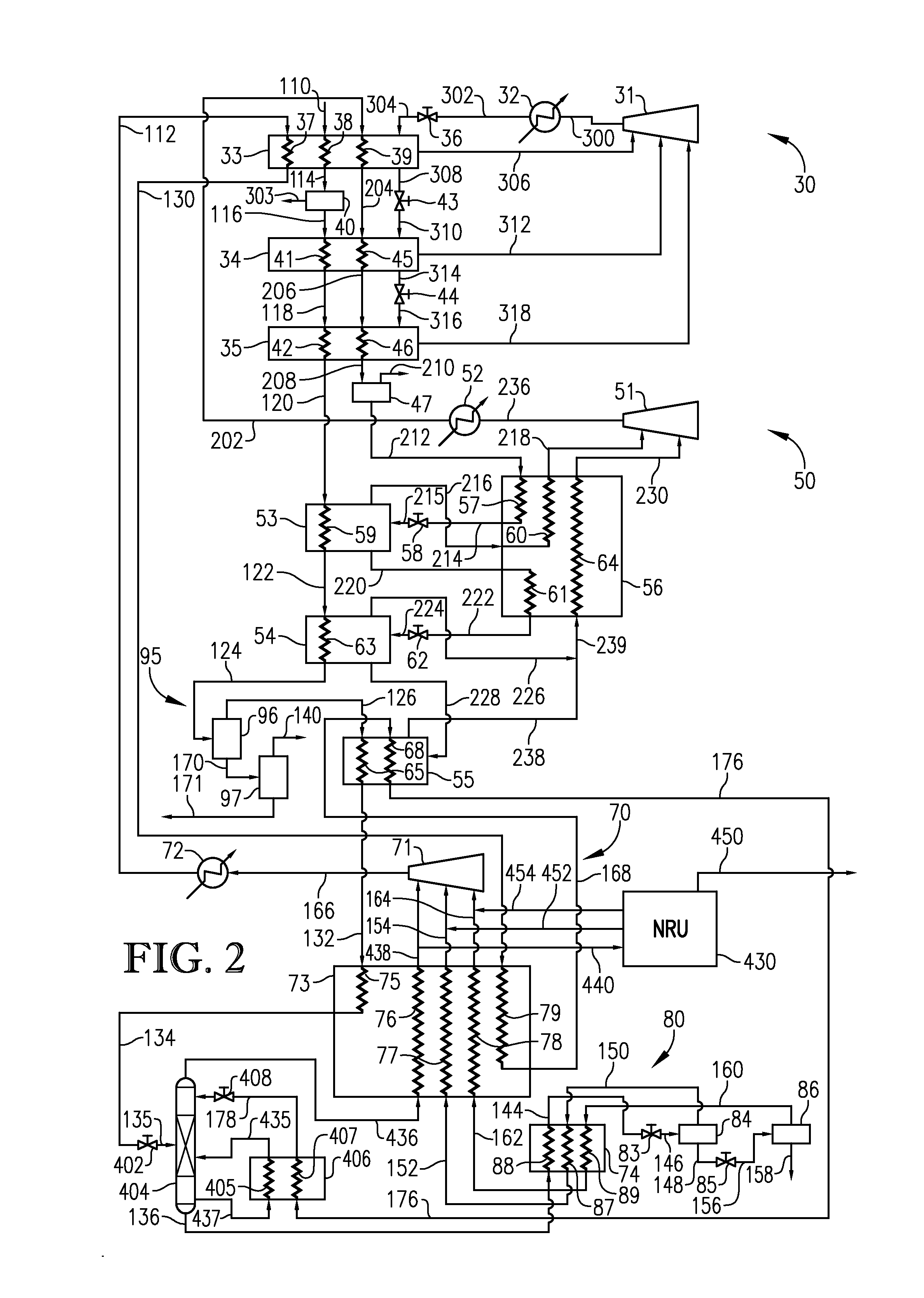Enhanced nitrogen removal in an LNG facility
a nitrogen removal and nitrogen technology, applied in the field of liquefying natural gas, can solve the problems of difficult condensation of gas, difficult operation, and high cost of pressure-containing vessels for storage and transportation
- Summary
- Abstract
- Description
- Claims
- Application Information
AI Technical Summary
Benefits of technology
Problems solved by technology
Method used
Image
Examples
Embodiment Construction
[0018]The present invention can be implemented in a facility used to cool natural gas to its liquefaction temperature to thereby produce liquefied natural gas (LNG). In general, the LNG facility comprises a plurality of refrigeration cycles that employ one or more refrigerants to extract heat from the natural gas and then reject the heat to the environment. In one embodiment, the LNG facility in which the present invention is incorporated into or used in combination with can comprise at least one, at least two, or at least three or more refrigeration cycles. Numerous configurations of LNG systems exist, and the present invention may be implemented in many different types of LNG systems.
[0019]In one embodiment, the present invention can be implemented in a mixed refrigerant LNG system. Examples of mixed refrigerant processes can include, but are not limited to, a single-loop refrigeration system using a mixed refrigerant, a propane pre-cooled mixed refrigerant system, and a dual mixe...
PUM
 Login to View More
Login to View More Abstract
Description
Claims
Application Information
 Login to View More
Login to View More - R&D
- Intellectual Property
- Life Sciences
- Materials
- Tech Scout
- Unparalleled Data Quality
- Higher Quality Content
- 60% Fewer Hallucinations
Browse by: Latest US Patents, China's latest patents, Technical Efficacy Thesaurus, Application Domain, Technology Topic, Popular Technical Reports.
© 2025 PatSnap. All rights reserved.Legal|Privacy policy|Modern Slavery Act Transparency Statement|Sitemap|About US| Contact US: help@patsnap.com



